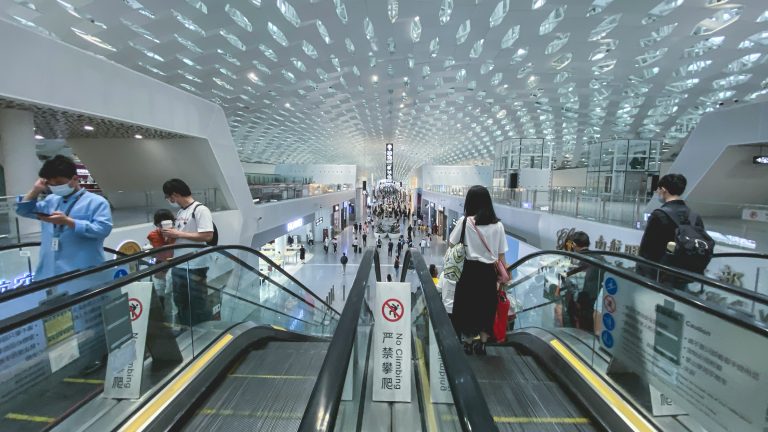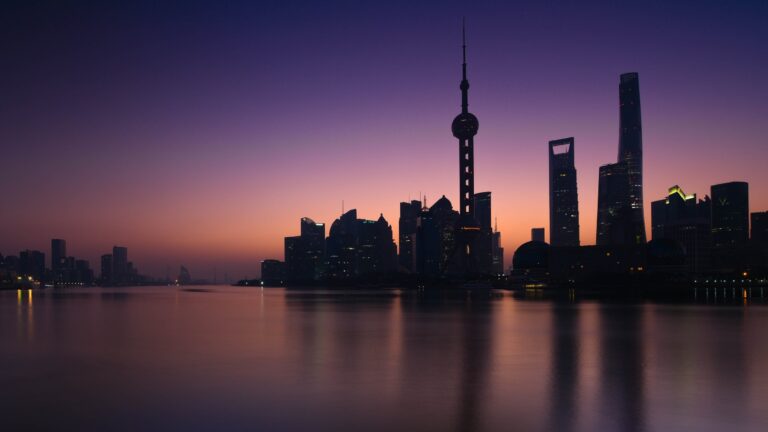Ryan and Abigail live and work in the Boston metro area. Ryan immigrated to the United States from China in 1999 and currently serves as a pastoral intern and staff member at Christ the King Presbyterian Church. Abigail grew up in Champaign, Illinois, and currently works and studies at Tufts University. They met while working in Washington, D.C., a city they love dearly. Catch up on the first and second parts of the series and make sure to check back tomorrow for the rest!
Before Ryan and I started dating, I was living a pretty settled life in D.C. I had moved out of an overcrowded group house and was living in a row house that I loved with just one roommate. My 9-5 job felt compelling, I was heavily involved with church and neighborhood ministries, I volunteered at local cultural events, and I had a wonderful community of friends. I distinctly considered that some people could live like this forever. How did I get from there to walking down the aisle toward Ryan Zhang?
The short version of this story starts with an email that showed up in my inbox the day after Valentine’s Day inviting me to visit a museum. The long story focuses a lot less on the meet-cute and a lot more on the significant work God did in our hearts even before our relationship began. It’s less about falling in love and more about the great Love that drew us both to himself and then to each other.
This winter I met a new friend over lunch. In her cross-cultural marriage she’s the one from a minority culture, and as our time unfolded she asked if during dating and engagement, I had felt any apprehension (as a white American) about entering a cross-cultural marriage. I wanted to give her a more thoughtful answer than my usual “No, I wasn’t too worried,” but I fumbled through my response. Here’s what I wish I had said:
A better checklist. Like many others, I spent unmarried years thinking about what kind of husband I thought I would be compatible with. I thought about what personality types I would enjoy, how many shared interests we should have, what kind of family I imagined we would want, and how he should share my interests and goals.
If I had been more objective at the time, I would have realized that this checklist was really a mirror. Essentially, I was trying to find an idealized version of myself. Finding someone with the same goals, priorities, experiences, and perspectives would mean marriage would disrupt my life as little as possible and also validate all my decisions and preferences.
Thankfully, the church and our believing friends pushed back on these ideas and clearly articulated alternate, Biblical reasons for marriage. After a while, the checklist started to look more like this:
-
evidence of personal submission to Christ and his transformative rule
-
membership commitment and service in a local church
-
vision of married life as a picture of Christ and the church
-
vision of marriage as a place of ongoing sanctification
Never miss a story
Sign up to receive our weekly email with our original articles. -
understanding that a spouse is a friend and partner, but not a savior
Evaluating potential boyfriends by this standard revealed some of my idolatrous expectations and created space to give someone unexpected a chance. This meant that when Ryan asked me on that first date, my decision couldn’t be based on whether or not I was interested in dating a Chinese guy. Instead I had to consider what I knew of his character through our already-shared life in the church and city. The question wasn’t “Why?” but “Why not?”
Theology matters. Marriage isn’t a decision made all at once. Looking back now, deep theological paths chosen before any sort of relationship existed between us affected things as small as our initial hello and as permanent as saying “I do.” In many ways, the decisions were made before the choices came.
Before Ryan and I started dating, we were already both embedded in a church community striving to learn what it means to love God and love others, particularly those who are not like us. It taught us that believers must resist cultivating only friendships that benefit us, and instead we must actively seek to love others the way God has loved us. We began to deeply believe that the gospel is beautifully displayed when God unites people who have no earthly reason to be together other than their commitment to love Jesus Christ and serve one another in love. That’s the reason for the church, and the reason for our marriage.
In a bi-cultural marriage this means there is freedom to work on the beautiful and chaotic calling of becoming family with someone very different. If my goal is for Ryan to fit neatly into my life, without altering any of my plans or preferences, we will fail – the cultural gap is too great. But if we both approach marriage loving God and choosing each other over and over again, we will grow.
“I do” to only you. On our wedding day, I wasn’t walking down the aisle toward an anonymous, generalized amalgam of the Chinese-American immigrant experience. I committed to a specific man. This means I didn’t have to become an expert on all of China before saying yes. During our dating and engagement, getting to know him and his family specifically took precedence over learning Chinese history, culture, and customs generally. It was okay that my entry point to those things was this specific person and family.
I’ve now learned Chinese legends and Cantonese schoolyard songs because they are Ryan’s favorites. I’ve learned that Chinese movies excel in a genre untapped by American films – the despondent man finally gets the girl. I’ve learned about hard Cultural Revolution years through stories of his parents, aunts, uncles, and grandparents. I’ve learned holiday traditions, funeral customs, and now have my own favorite dim sum dishes. None of these are because I set out to learn those things, but because I set out to love my husband.
“I do” to all of you. By bringing two cultures under one roof, we see in very immediate and personal ways how easily we can ignore or refuse to love another culture, and feel justified in doing so! But God did not call us to “prefer one another in love – unless the food is weird” or “as much as it is possible with you, live at peace with everyone – except if they speak Cantonese.” We are learning more and more that God’s word challenges believers from all cultures. We also see how he uses close living with another culture to teach us both new facets of his character, and demonstrate daily the greater and greater degrees to which he can be trusted.
Loving and committing to Ryan must lead me to know and love exponentially more people and places. I cannot enjoy nerding out together over U.S. presidential biographies and then sigh at watching another Cantonese-language film. I must push back against the unspoken assumption that members of the dominant culture have the right to determine how much “otherness” is acceptable or enjoyable. I cannot love my husband well and hang on to the privilege of ignoring the minority experience in America and in the American church. I must love this whole person and join him in his whole experience, even when it means confronting some ugly things in my own heart and culture.
We are not home yet. After our wedding, Ryan and I spent the summer in a tiny dormitory apartment above my office, and even as I write this we don’t know where we’ll get our mail a year from now. In deeper ways, the raised eyebrows, uncomprehending stares, and uninformed comments we encounter from time to time as a cross-cultural couple reminds us this world is not our home. We are rarely both culturally comfortable at the same time. And yet, we celebrate.
We celebrate because our marriage points us to a Love greater than greeting cards or chocolate hearts. We see our marriage as a foretaste of the kingdom of heaven, where people of all nations and languages will be presented as the bride of Christ. We pray and work now for this kingdom to come on earth as it is in heaven, looking for the day when Christ will unite all nations to worship him, wipe away all tears, and make all things new.































